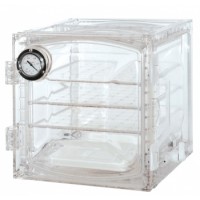Evaporation & Drying
In general, drying refers to the removal of moisture from solids, gases or liquids. In the context of thermal process engineering, evaporation is understood to be the separation of a solvent from a solution. For drying gases and liquids, adsorption is normally used. The food technology industry is an example of where drying solids on a large scale is important. Thermal drying of solids involves removing moisture from the material by evaporation. The drying characteristics depend on how the moisture is retained within the material. In the first instance, the liquid adhering to the surface of the material to be dried can be removed by evaporation. Once this liquid has been removed, drying of the moisture contained within the capillaries and pores of the material begins. The drying speed reduces due to the need to overcome capillary forces and diffusion resistance. Crystal water which is bonded into the crystal structure of the material, can only be removed by intense heating in addition to low drying speed.

